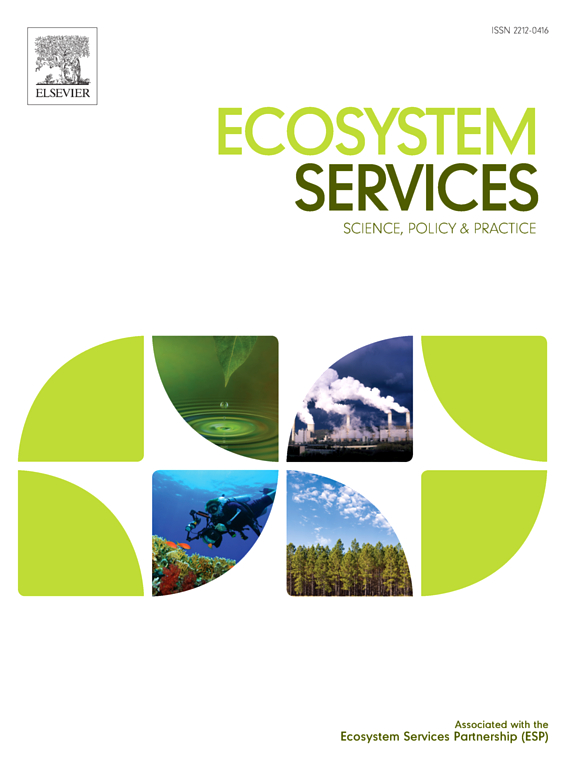A new method to classify cultural ecosystem services and visualize their economic value: A case study of Guilin, a famous tourist destination in China
IF 6.6
2区 环境科学与生态学
Q1 ECOLOGY
引用次数: 0
Abstract
Cultural ecosystem services (CES) are one of the most important benefits that humans obtain from nature. However, due to inconsistent understanding of CES and challenges in assessment methods, incorporating CES into policy frameworks is difficult. Based on field survey data from Guilin, this paper uses principal component analysis (PCA) to reclassify CES. Then, choice experiments (CE) are combined with the public participation geographic information system (PPGIS) to measure the value of CES in Guilin and realize the spatial visualization of the CES’ economic value. The results are as follows: CES in Guilin can be reclassified into four types: natural and cultural heritage, health and hedonic well-being, aesthetic information, and existence and bequest value of biodiversity. In addition, the preference order of respondents for these types is as follows: aesthetic information, health and hedonic well-being, existence and bequest value of biodiversity, and natural and cultural heritage. The value of CES in Guilin is 0.998 billion yuan/year, and the per capita willingness to pay (WTP) for CES is 219.67 yuan/year. Through the visualization of economic value, this study finds that there is a gradient in CES value in space. The CES assessment method developed in this study is replicable and practically applicable, which is of great significance for promoting the inclusion of CES in policy considerations and improving human well-being.
文化生态系统服务分类与经济价值可视化的新方法——以中国著名旅游胜地桂林为例
文化生态系统服务是人类从自然中获得的最重要的利益之一。然而,由于对消费环境的理解不一致以及评估方法的挑战,将消费环境纳入政策框架是困难的。本文以桂林市野外调查数据为基础,采用主成分分析(PCA)对生态系统进行重新分类。然后,将选择实验(CE)与公众参与地理信息系统(PPGIS)相结合,对桂林市消费空间价值进行测度,实现消费空间经济价值的空间可视化。结果表明:桂林市CES可重新划分为自然与文化遗产、健康与享乐福祉、审美信息和生物多样性存在与遗产价值4种类型。此外,受访者对这些类型的偏好顺序为:审美信息、健康和享乐幸福、生物多样性的存在和遗产价值、自然和文化遗产。桂林市CES价值为9.98亿元/年,人均消费意愿(WTP)为219.67元/年。通过经济价值可视化,本研究发现CES值在空间上存在梯度。本研究建立的消费消费评估方法具有可复制性和实践性,对促进消费消费纳入政策考量,改善人类福祉具有重要意义。
本文章由计算机程序翻译,如有差异,请以英文原文为准。
求助全文
约1分钟内获得全文
求助全文
来源期刊

Ecosystem Services
ECOLOGYENVIRONMENTAL SCIENCES&-ENVIRONMENTAL SCIENCES
CiteScore
14.90
自引率
7.90%
发文量
109
期刊介绍:
Ecosystem Services is an international, interdisciplinary journal that is associated with the Ecosystem Services Partnership (ESP). The journal is dedicated to exploring the science, policy, and practice related to ecosystem services, which are the various ways in which ecosystems contribute to human well-being, both directly and indirectly.
Ecosystem Services contributes to the broader goal of ensuring that the benefits of ecosystems are recognized, valued, and sustainably managed for the well-being of current and future generations. The journal serves as a platform for scholars, practitioners, policymakers, and other stakeholders to share their findings and insights, fostering collaboration and innovation in the field of ecosystem services.
 求助内容:
求助内容: 应助结果提醒方式:
应助结果提醒方式:


